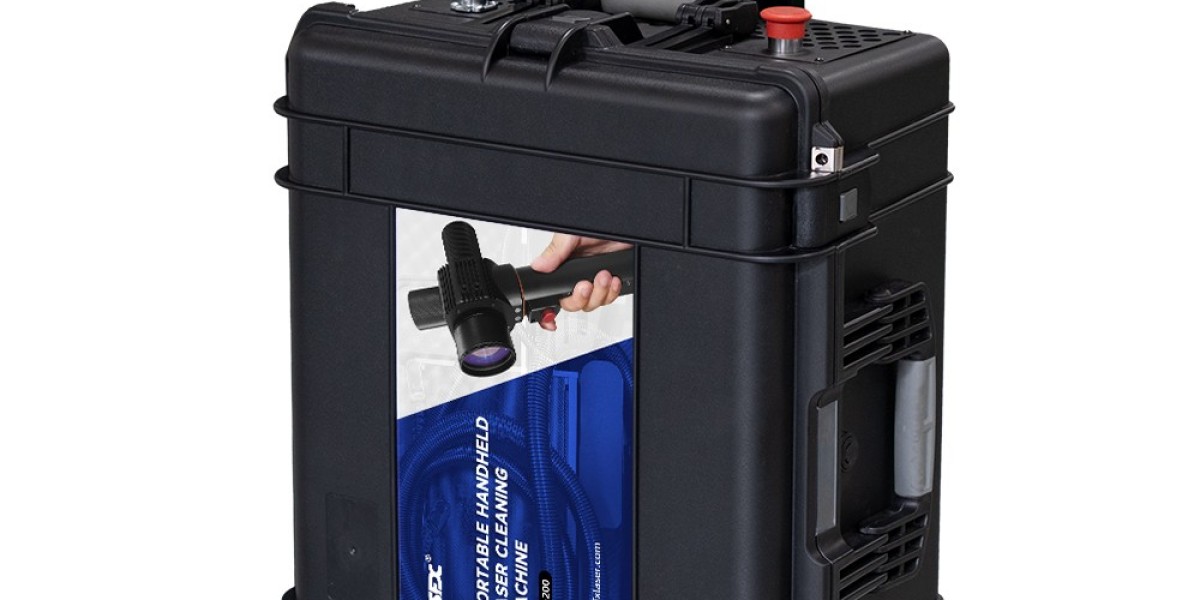A laser cleaner machine has become a pivotal innovation in the field of industrial cleaning, offering efficient and precise cleaning solutions across various industries. Its primary working principle, along with the range of applications, has made it an essential tool for a variety of sectors, including automotive, aerospace, electronics, and heritage preservation. In this article, we will delve into the detailed operation of a laser cleaner machine, its mechanism, and the diverse ways in which it is utilized across different industries.
What is a Laser Cleaner Machine?
A laser cleaner machine is a technology that uses a laser beam to remove contaminants, rust, coatings, and other unwanted materials from surfaces. Unlike traditional cleaning methods that rely on physical scrubbing, abrasive materials, or chemical solvents, a laser cleaner uses high-intensity laser light to achieve cleaning results in a non-contact, environmentally friendly manner. This technology is rapidly gaining popularity due to its precision, minimal need for consumables, and eco-friendliness.
How Does a Laser Cleaner Machine Work?
The working principle behind a laser cleaner machine lies in the interaction between the laser beam and the target surface. When the laser beam is directed at a surface, it generates intense heat. The high energy of the laser causes the surface contamination, such as rust, dirt, oil, or old paint, to be removed or vaporized. The laser energy causes the contaminants to break down into small particles, which are then either blown away or trapped in a dust collection system. The key to this technology’s success is the precise control of the laser’s power and wavelength, which ensures that only the unwanted material is targeted, while the underlying surface remains unharmed.
A laser cleaner machine typically consists of three main components:
- Laser Source: The laser generates the necessary energy to clean surfaces.
- Optical System: The optical system focuses the laser beam onto the target surface.
- Control System: This system allows the operator to regulate the power, frequency, and duration of the laser pulses to optimize the cleaning process.
The process is non-abrasive and does not require any chemicals or solvents. The laser beam is tuned to specific wavelengths that interact with the contaminants without damaging the material beneath. The targeted materials absorb the laser energy, causing them to either evaporate or be blown off the surface, leaving the material underneath unharmed.
Key Steps in the Laser Cleaning Process
Preparation of the Surface: The surface that needs cleaning is first examined to identify the contaminants present. The laser cleaner machine is calibrated accordingly based on the material and the type of contaminants.
Laser Emission: The laser is directed onto the contaminated area. The intensity and frequency of the laser beam are precisely controlled to achieve the desired cleaning effect.
Contaminant Removal: As the laser energy interacts with the contaminants, the latter either vaporize or are dislodged from the surface. The debris created during the process is either collected by an integrated suction system or is allowed to fall away.
Post-Cleaning Inspection: After the cleaning process, the surface is inspected for cleanliness. This step ensures that the cleaning process has been effective and that the surface is free of contaminants.
Applications of a Laser Cleaner Machine
Laser cleaner machines are versatile tools that are employed across many sectors. Below are some of the primary industries that benefit from this technology:
1. Automotive Industry
In the automotive industry, laser cleaner machines are used for cleaning metal parts, engine components, and removing paint from bodywork. The precision of laser cleaning allows for the removal of contaminants without damaging delicate parts. Laser cleaners are also utilized for cleaning welding joints and preparing surfaces for further treatments or coatings.
2. Aerospace Industry
Aerospace components often require the highest level of cleanliness to maintain safety and performance standards. Laser cleaner machines are used for cleaning turbine blades, engine parts, and delicate components that are sensitive to traditional cleaning methods. This technology ensures that contaminants such as rust and coatings are removed without the risk of damaging precision components.
3. Electronics Industry
In electronics manufacturing, laser cleaning is used to remove flux residues, soldering residues, and other contaminants from circuit boards. The delicate nature of these components means that traditional cleaning methods, which may involve harsh chemicals or abrasive materials, are not suitable. Laser cleaning provides an ideal solution, as it offers a non-contact, precise, and environmentally friendly alternative.
4. Heritage Preservation
Laser cleaner machines are also used in the restoration and preservation of cultural heritage items. The cleaning of statues, monuments, and artworks often requires delicate handling to avoid damaging the original materials. Laser cleaning provides an effective way to remove layers of dirt, grime, and corrosion from historical artifacts without affecting the integrity of the object.
5. Shipbuilding and Marine Industry
In shipbuilding, laser cleaners are used to remove rust and marine growth from the hulls of ships, pipes, and other parts of the vessel. The process is efficient, as it can be used to clean large areas quickly and precisely, ensuring that the ships maintain their integrity and appearance.
6. Renewable Energy Industry
The renewable energy sector benefits from laser cleaning in the maintenance and cleaning of wind turbines and solar panels. For instance, laser cleaning can be used to remove coatings or corrosion from turbine blades, helping to extend the lifespan of these components and maintain their operational efficiency.
7. Manufacturing Industry
In general manufacturing, laser cleaners are used to prepare surfaces for further processing, such as coating or welding. The non-invasive nature of laser cleaning makes it ideal for delicate materials, ensuring that the integrity of the product is maintained.
Why Choose Laser Cleaning Over Traditional Methods?
Laser cleaning machines offer several key advantages over conventional cleaning techniques. Traditional methods, such as sandblasting, grinding, or chemical cleaning, often involve abrasive actions or the use of harmful chemicals, which can pose risks to the surface being cleaned or the environment. Laser cleaning, on the other hand, is a non-contact process that does not require the use of consumables, such as abrasives or chemicals, making it more environmentally friendly. Additionally, the precision of the laser beam allows for the cleaning of very specific areas, making it suitable for applications that demand high levels of accuracy.
Another advantage of laser cleaning is its ability to clean hard-to-reach areas. Unlike manual cleaning methods, laser cleaning machines can be programmed to clean complex geometries and intricate parts without the need for manual intervention.
Moreover, laser cleaning machines are highly efficient. The process is quick, and since there are no consumables involved, the cost of operation is relatively low in the long term. This efficiency, combined with its precision, makes laser cleaning a cost-effective solution for many industries.
Conclusion
Laser cleaner machines have emerged as a highly effective, environmentally friendly, and precise method for cleaning surfaces in various industries. Their ability to remove contaminants such as rust, paint, and coatings from a wide range of materials, including metal, plastic, and delicate surfaces, makes them an indispensable tool for industries ranging from automotive to heritage preservation. The technology continues to evolve, offering increasingly efficient and cost-effective solutions that are poised to reshape the future of industrial cleaning.
By utilizing laser cleaning technology, industries can achieve superior cleaning results without the environmental and safety concerns associated with traditional methods. As laser technology advances, we can expect to see even more widespread adoption of laser cleaner machines across diverse fields.









